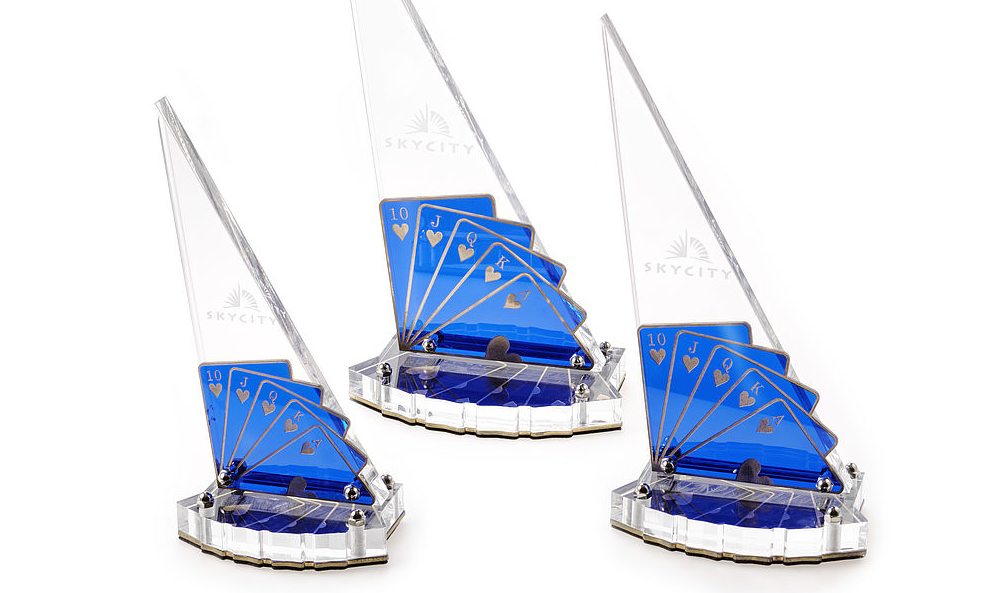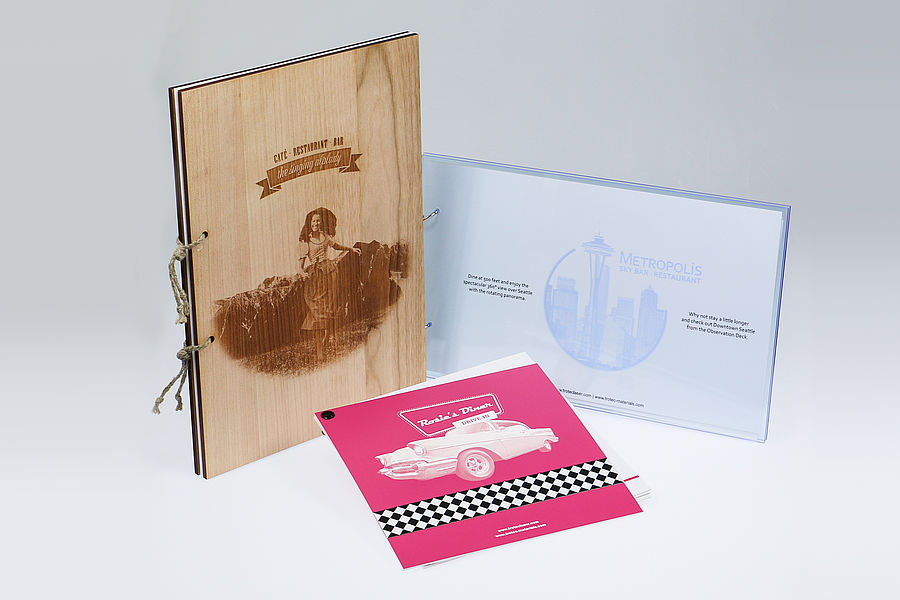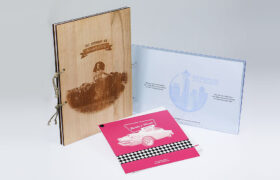A laser engraving machine is the ideal solution for enhancing your product lines by creating individual designs that are highly customizable, or by simply decorating an item with a personalized touch. There are endless possibilities and a wide range of applications that can be processed with a laser engraver, such as athletic awards and trophies engraved with the recipient’s name, promotional pens engraved with company information, or data plates engraved for traceability. Throughout this page, you will learn how laser engraving works as well as the advantages of engraving nearly any design on a variety of materials.

Technical overview of the laser engraving process
During the laser engraving process, the laser beam exposes the material to a tremendous amount of heat. This results in a color change and contrast mark, or the material will evaporate or burn depending on duration of time that the workpiece is exposed to the heat. The finished engraving is both permanent and extremely durable as well as resistant to outside influences, such as abrasion or scratches.
Engraving with a laser machine – as easy as printing
Engraving with a laser machine is as easy as printing with an office printer. To start, you will need to design your file and create the engraving layout using your preferred graphics program (e.g., AutoCAD, CorelDraw, Photoshop, Adobe Illustrator, InkScape, etc.). Then send the graphic to the laser machine using the printer driver and with the push of a button, your workpiece is laser cut or laser engraved using the pre-programmed parameters set in the laser software. If you need to adjust the settings or use your own specific laser parameters, advanced settings can be programmed in the JobControl® laser software. Tip: To increase efficiency, store process types in the printer driver to automatically optimize these processes.

Vector and raster engraving with a laser machine
There are two main types of laser engraving: Raster and vector.
Raster engraving is the most common method of engraving and refers to engraving line by line or point by point from the pixels of your designed graphic.
Comparatively, vector engraving (also known as “scoring”) refers to the laser machine tracing the lines and curves of your graphics, one after the other or “vector by vector”, while engraving at the same time.
For applications with larger areas, such as images, stamps, shaded-in lettering or wood engraving, the raster engraving method is more appropriate and will offer better results. Alternatively, using the vector engraving method for thin lines will be faster and more favorable.
Popular applications to process with a laser engraver
- Awards and trophies
- Crafts
- Giftable items
- Glass
- Paper finishing
- Promotional products
- Signage
- Stamps
- Wood and many more…

Advantages of using a laser engraver over traditional manual engraving methods
| Larger range of compatible applications and materials | The laser beam is a universal tool for processing a variety materials, including glass, wood, textiles, MDF, cardboard, paper, metals, foil and many others. |
| Non-contact material processing | With traditional manual engravers, your materials will typically need to be fixed or clamped with a vacuum, which wastes time and can damage the workpiece. Comparatively, there is no time-consuming and counterproductive efforts spent on adjusting materials with a laser engraver and materials will not warp or chip. |
| No wear and tear on critical components | Non-contact material processing means there is no wearing of the laser beam and no additional costs for replacing tools, unlike milling cutters. |
| Superior precision and fine details | Laser cutting and engraving allows for unique shapes and sizes to be processed to a tenth of a millimeter, so even the tiniest fonts and precise details are produced with clarity. |
| Economic production | Production is cost-effective and economically feasible regardless of the job type. Efficiently produce individual pieces and smaller jobs all the way up to large quantities for high volume orders, all in one machine. |
